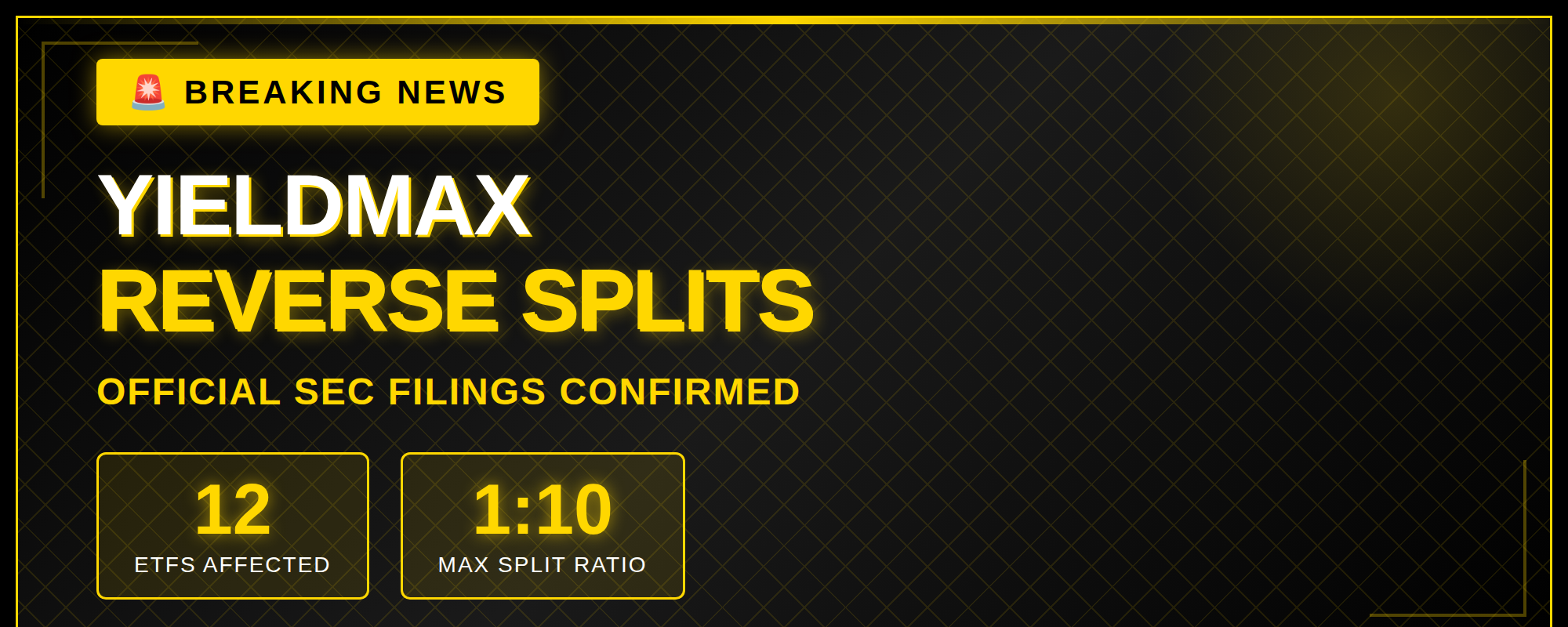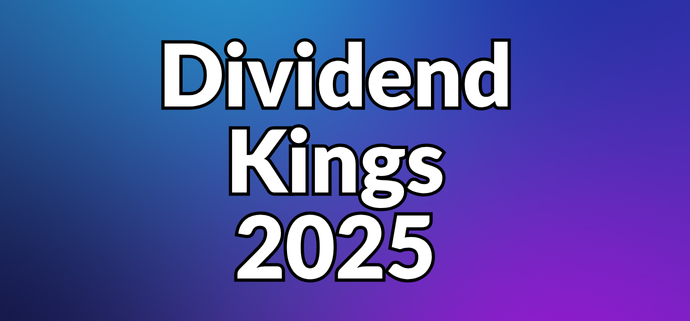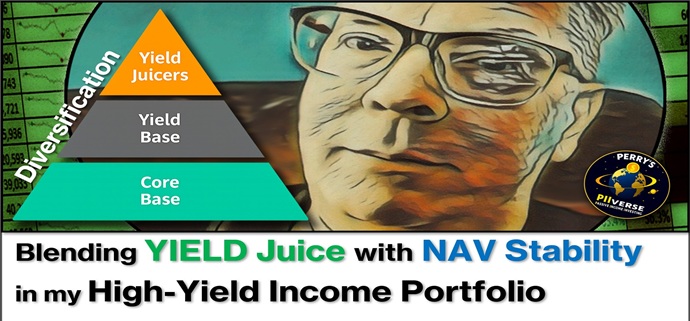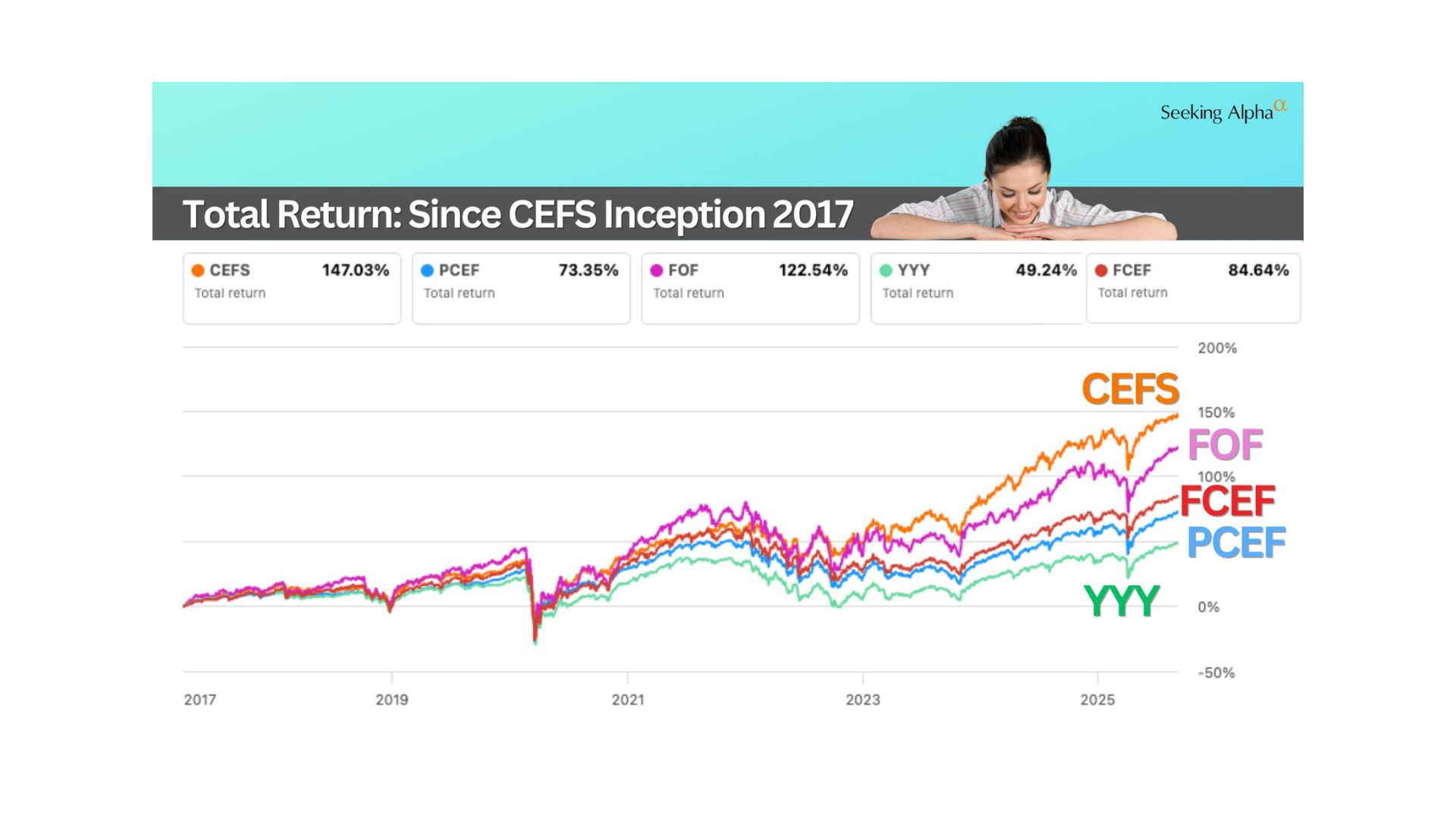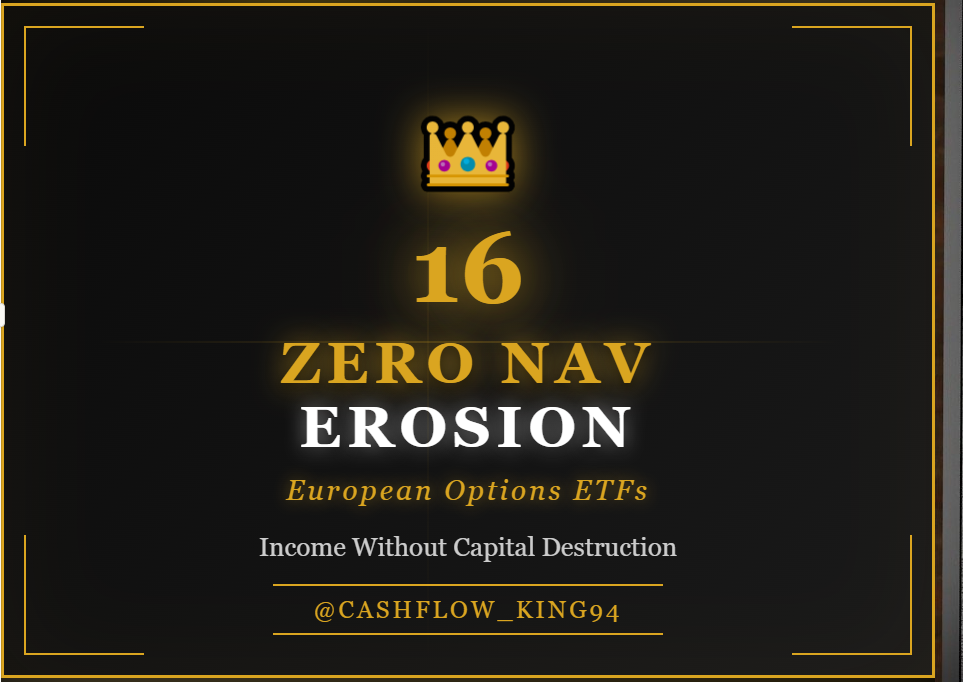For Investors Who Want Growth AND Income
Options-based ETFs promise the best of both worlds: collect fat distributions while your capital appreciates.
The reality? Most are slow-motion wealth destroyers.
I've spent years filtering through dozens of these funds, and here's the truth: 40%+ yields almost always come at the cost of your principal.
But there's a better way. Here's my exact framework for finding options-based ETFs that generate real income without eroding your capital.
My 5-Part Framework
1. Start With a Bullish Industry
This is non-negotiable.
I only consider options-based ETFs in sectors where I have multi-year conviction:
Semiconductors - The AI buildout requires massive chip production. NVDA, TSM, AVGO aren't going away.
Crypto - Institutional adoption is accelerating. Bitcoin ETFs, corporate treasuries, regulatory clarity - the infrastructure is being built.
Index-based (S&P 500, Nasdaq-100) - Proven, diversified exposure with decades of track record.
Why this matters:
An options strategy can't overcome a dying sector. If the underlying holdings are in structural decline, no amount of clever option-writing will save you.
I don't care if a coal ETF is paying 60% - the NAV will still crater because the industry is dying.
Pick your battlefield first. Then pick your weapon (options strategy).
2. Focus on Total Return Composition
Most investors look at a chart trending upward and think "great total return!"
This is lazy analysis.
Total return has two distinct components:
Total Return = Upside Capture + Distributions
I target 10-20% annualized total returns, but the mix of that return is critical.
Example:
ETF A: 15% total return
+8% NAV appreciation
+7% distributions
ETF B: 15% total return
-5% NAV decline
+20% distributions
Both show 15% on a total return chart. But:
ETF A is compounding wealth
ETF B is liquidating itself
What I want to see:
The bulk of total return should come from upside capture (NAV growth), with distributions as the cherry on top.
If distributions are doing ALL the heavy lifting while NAV bleeds, you're in a yield trap.
3. NAV Stability or Growth is Non-Negotiable
This is where 90% of high-yield options ETFs fail.
NAV (Net Asset Value) = The actual per-share value of the fund's assets.
When NAV consistently declines, you're not earning income - you're receiving return of capital and getting taxed on it.
The Death Spiral of Decaying NAV
Let's say you invest $10,000 in an options ETF with:
30% distribution yield
-15% annual NAV decline
Here's what happens:
Year 1: $10,000 base → $3,000 income (30.0% effective yield)
Year 2: $8,500 base → $2,550 income (25.5% effective yield)
Year 3: $7,225 base → $2,167 income (21.7% effective yield)
Year 4: $6,141 base → $1,842 income (18.4% effective yield)
Year 5: $5,220 base → $1,566 income (15.7% effective yield)
Your "30% yield" turned into a 15.7% effective yield because your capital base got destroyed.
Meanwhile, you paid taxes on every distribution as if it were real income.
What you want instead:
Stable or growing NAV means:
The options strategy is working
Distributions are sustainable
Your principal is compounding while generating income
4. Keep Yields Below 40%
Once I've filtered for:
Bullish sector
10-20% total returns
NAV stability/growth
The yield naturally falls into the sub-40% range.
This isn't arbitrary - it's a symptom of sustainable mechanics.
Funds yielding 50%+ are almost always:
Paying out more than the options strategy generates (return of capital)
Using unsustainable leverage
Running aggressive strategies that will blow up in volatility
The math doesn't lie:
If an options strategy on SPY can realistically generate 12-15% annualized premium income, and the fund is paying out 45%, where's the extra 30% coming from?
Your own capital.
5. Understand the Options Strategy Being Used
This is the most important part - and where most investors completely fail.
Not all options strategies are created equal.
Standard Covered Call Strategy:
Sell call options on holdings
Collect premium income
Problem: Massive upside cap
Example:
An NVDA covered call ETF might:
Generate 35% yield by selling calls
But cap your gains at 10-15% above current price
You miss the 50% rally
You collected "income" but sacrificed real wealth creation. NVDA holders made 50%. You made 15% + distributions.
Was it worth it?
Better Options Strategies to Look For:
1. Put-Write Strategies
Sell cash-secured puts
Generate income from volatility
Can work well in stable/rising markets
Less upside cap than covered calls
2. Collar Strategies
Buy protective puts, sell calls
Lower yield but better downside protection
More balanced risk/reward
3. Dynamic/Tactical Covered Calls
Adjust strike prices and expirations based on market conditions
Don't mechanically cap upside at fixed levels
Requires active management
The key question to ask:
"What am I giving up in upside to generate this yield?"
If the answer is "most of it," walk away.
What is TRUE NAV Decay?
Not all NAV decline is created equal. This is critical to understand.
NOT True NAV Decay:
Scenario: The underlying asset drops in value.
Example: You own a semiconductor ETF. NVDA drops 20% in a correction. Your NAV drops 20%.
This is NOT NAV decay - this is market volatility affecting asset value. It's temporary if the sector thesis remains intact.
TRUE NAV Decay:
Scenario: The fund's structure erodes value over time independent of market moves.
True NAV erosion happens when:
1. Paying out more than the strategy earns
Fund distributes 40% annually
Options premiums only generate 18%
The difference comes from liquidating holdings (return of capital)
2. The options strategy fails structurally
Shares constantly get called away in rallies (covered calls)
You miss upside repeatedly
NAV lags underlying index by 5-10% annually
3. Fund mismanagement
Poor strike selection
Bad timing on option rolls
High expense ratios eating into returns
This is the death spiral you must avoid.
True NAV decay means the fund's mechanics are fundamentally broken. No market recovery will save you.
Real Example: Bad vs. Good Options ETF
Bad Options ETF:
Yield: 45%
Options Strategy: Aggressive weekly covered calls at-the-money
NAV Change: -12% annually
Total Return: +33%
What's happening:
Fund caps all upside by selling calls too close to current price
Misses every rally
NAV slowly bleeds as shares get called away below market value
"High yield" is just your own capital being returned
5-year outcome:
Your $10K → $5,300 in principal
Annual income: $2,385 (down from $4,500)
You're objectively poorer
Good Options ETF:
Yield: 22%
Options Strategy: Conservative covered calls 10-15% out-of-the-money, quarterly expirations
NAV Change: +4% annually
Total Return: +26%
What's happening:
Fund captures most upside moves
Options premiums are sustainable
NAV compounds while generating income
5-year outcome:
Your $10K → $12,167 in principal
Annual income: $2,677 (UP from $2,200)
You're building wealth
The Long-Term Math That Changes Everything
Here's the reality most investors miss:
Scenario A: High Yield, Decaying NAV
35% yield
-10% NAV annually
Year 5 result:
Capital: $5,905 (down 41%)
Annual income: $2,067 (down 41%)
Scenario B: Moderate Yield, Growing NAV
20% yield
+5% NAV annually
Year 5 result:
Capital: $12,763 (up 28%)
Annual income: $2,553 (up 28%)
Lower yield + NAV growth = MORE total wealth and MORE income long-term.
The math is undeniable.
My Final Checklist
Before I buy any options-based ETF, it must pass all 5 criteria:
Bullish sector - Multi-year conviction in the underlying industry
NAV stability or growth - No structural decay
10-20% total returns - Proven track record
Yields below 40% - Sustainable distribution mechanics
Smart options strategy - Not capping all my upside
When all 5 align, I find ETFs that balance income today with growth tomorrow.
The Bottom Line
Don't chase the highest yield. Chase the best total return with NAV stability.
Take the time to understand:
What options strategy is under the hood
How much upside you're sacrificing
Whether distributions are sustainable
If NAV is structurally decaying
Think long-term, not short-term.
A 20% yield with growing NAV will build more wealth than a 45% yield with decaying NAV.
Your portfolio - and your future self - will thank you.





